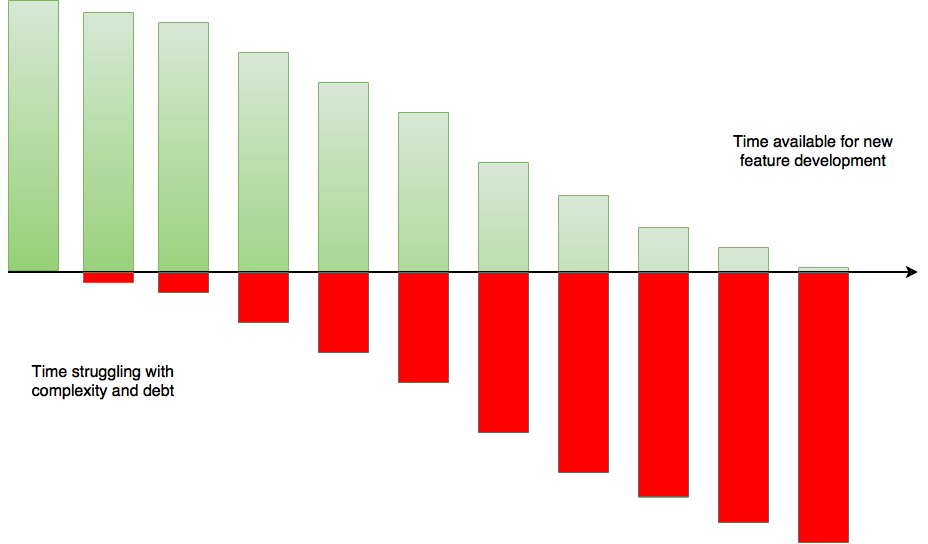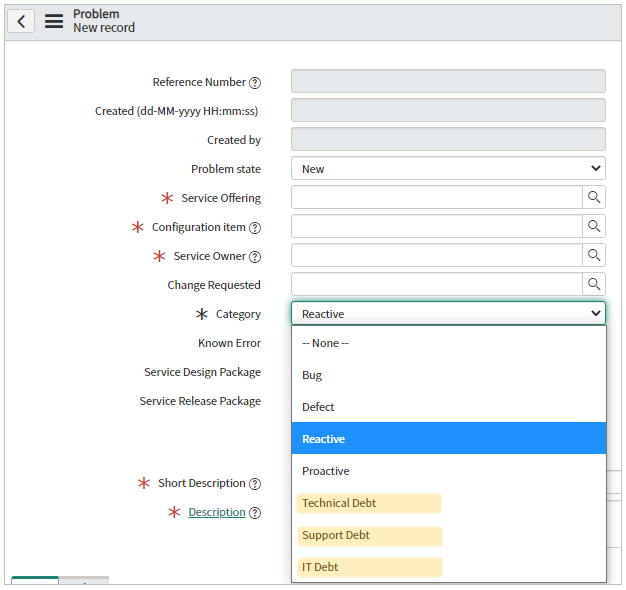Understanding Debt
Debt has recently become a common term within many areas of IT and the wider University. Debt, from an IT perspective, is created when there is an issue with a service or product that has occurred because the resource, be that people, time, or money, has not been available to avoid it.
A good analogy for debt is that running an IT service is similar to running and owning a car; if you don’t take it for regular repairs (or don’t have the time), upgrades and checks it becomes inefficient and sometimes dangerous.
If debt is not repaid, and is added to, it makes it harder over time to deliver changes and improvements to services and can lead to significant operational support costs and performance issues.

Within IT Service we generally consider 3 types of debt:
1. Technical debt
Technical debt occurs during the development of a new service or product. This is usually because we need to deliver a ‘good enough’ solution quickly, with the intention to return and improve things later. Examples include:
- Suboptimal code or integrations
- Unsustainable, poorly designed and overly complex technical architectures
- Using non-production infrastructure
The creation of temporary technical debt can support agile development and timely releases. However, it does require actively managing and revisiting to ensure that excessive debt is not accrued.
2. Support debt
Similarly, support debt mainly occurs during the development of a new Service or Product. Support debt is the process equivalent of technical debt, it covers non-functional problems such as:
- Unclear ownership and support
- Lack of knowledge transfer to enable effective support
- Lack of automation or workflow to manage user or group administration
Whereas controlled creation of temporary technical and support debt may sometimes benefit rapid delivery by giving us the ability to make things happen when the University most need it, there is rarely any benefit in accruing IT debt.
3. IT debt
Many see IT debt as being part of technical debt, but we categorise it separately. IT debt occurs outside of projects and accrues over time as technology progresses and current services and products are not maintained, or they may no longer be fit for purpose or use. Examples include:
- Ageing infrastructure which is no longer supported
- Services that have not been updated or patched and kept within their support levels
Capturing Debt
In IT Services we know we have amassed significant debt over the years, but we have struggled to quantify both how much and where that debt lies. We are now committing to capturing and categorising the debt we generate, as well as all of our outstanding debt in a consistent way, so that we can understand the scale of the issue and plan accordingly to repay it.
To capture debt, we use Problem records within ServiceNow and have provided additional categories for the various types of debt.

We can capture debt during the Design and Release phases of a project or simply create a problem record and categorise it as debt at any time.
We expect that initially, some lengthy lists and groups of Problem records will be created. Whilst that will appear daunting, it is a positive step towards beginning to repay our long-standing debts.
There is already a high-level awareness of many of the debts we have in IT, as we encounter them in our daily work. Categorising it will allow us to start prioritising and managing how we address it. Likewise, capturing debt as it is created, will help ensure that it is revisited in a timely manner, and reduce the time it takes to repay it.
N.B. IT Services staff can find more information in our Knowledgebase article KB15194.
Dealing with Debt
Business Critical Support has been agreed with the wider University as one of the top 3 priorities for IT Services in the coming months and removing (or repaying) the various debts we have accumulated is critical in this area.
We have made substantial progress recently in addressing IT debt. We have upgraded a lot of the underlying structure of priority services, such as Red Hat and Oracle, so that they remain in support and further upgrades are scheduled. Momentum is building around removing systems that have become legacy as a result of the New Core Programme such as Alta, Coda and Proactis. Planning is underway and the decommissioning will start early next year (2021).
To continue this progress, outstanding debt will be reviewed regularly by the IT Operational Management Team (ITOMT) and IT Services will allocate and protect staff time to deliver these improvements across all our infrastructure and applications.
For any new technical or support debt created by service releases going forwards, DAB (Design Authority Board) will monitor and review it to ensure that it does not impact on other areas of ITS or the wider University in an adverse manner.
Finally, our Digital Strategy has an increasing focus on sustainable IT architectures, service consolidation, automation, and greater utilisation of cloud technologies as well as taking an increasingly product-based approach in a number of service areas. These will all contribute to decreasing both the amount of debt we create and ensuring that any debt we are carrying is owned and addressed.
Written by:
Ian Bowman (Head of Service Management) and
Faith Thomas (Problem Specialist)
Acknowledgements
- Adrian Hassell
- Liz Simcox
- Tim Packwood
